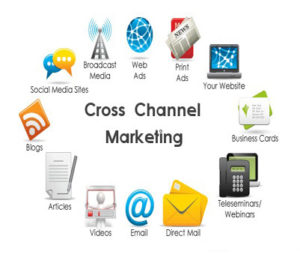[vc_row][vc_column][vc_column_text]CROSS CHANNEL ORCHESTRATION FUNDAMENTALS:
ALIGNING WEB WITH ALL MARKETING CHANNELS
Today’s consumers are demanding: they have become more unforgiving of a poor customer experience and expect interactions on their desktop and mobile devices to be responsive, intuitive, and easy to use. Marketers understand that delivering the most relevant experience is the key to gaining continued satisfaction and loyalty from their digital consumers.
Oftentimes, however, when it comes to marketing to consumers there are two dynamics. On one hand you have what consumers say they want out of a customer experience. On the other hand, there is what they actually receive.
What they want are experiences that are personalized, contextually relevant, and consistent— regardless of online or offline channel or life-cycle stage. What they too often get, however, are experiences that are disconnected, not contextually relevant, and inconsistent across channels and life-cycle stages.
Given the following data points, this is highly problematic for a great number of marketers.
• Two-thirds of all shoppers regularly use more than one channel to make purchases
• The average number of channels used before conversion rose from 1.25 in January 2010 to 3.25 in 2014.2
• The average shopper now makes on average 9.5 visits to a retailer’s site before deciding to buy
• Customers who shop on more than one channel have a 30% higher Lifetime Value than those who shop on only one
It’s no wonder that, according to Econsultancy, a mere 5% of marketers say they are “very much set up to effectively orchestrate cross-channel marketing activities.”
Who’s Responsible?
Well, to put it bluntly, marketers themselves are partly responsible. The customer experience is broken because the marketer experience is broken. But it’s not entirely marketing’s fault. It’s the legacy technology that provides only a distorted view of the customer that creates the broken experiences. It is the same technology that, while providing rich behavioral, demographic, and preference data, does not allow for silos of data to be shared across channels.
Is it any wonder that according to Nielsen only 11% of marketers have high confidence in the audience they’re targeting? There is far too often a disconnect between marketing and commerce that prevents progress, which means that despite having similar goals, campaign planning and campaign execution often happen in a vacuum.
How To Fix What’s Broken
Now that you know what’s broken, it’s time to fix it—a.k.a., use the right technology that will provide you with the capability to personalize the full customer experience at a higher resolution across messaging, web, mobile, and applications. For B2C marketers it is vital that the technology you use enables you to orchestrate the full experience from message to conversion, as well as extend personalization and consistency across channels—all while increasing engagement by speaking to customers through their channel of preference.
You need to be able to connect the digital dots and create holistic customer profiles: digital dots such as website behaviors, browsing data, physical location, and demographics. You then need to be able to combine those dots with cross channel unique IDs, customer preferences, behavioral data, and channel preferences.
Testing & Optimization
It should come as no surprise to learn that 96% of marketing leaders say customer experience optimization is key to their bottom line. The problem, however, is that these same marketers continue to struggle to understand what content should go to what segments at what point in the customer journey for maximum ROI.
Marketers have a clear and inherent need to optimize a consumer’s path to purchase. And the way to do that effectively is via testing and optimization. Optimization is about using data to systematically discover and deliver what customers want—and it all starts with testing. The challenge, though, is that testing needs to be easy enough to be something we always do, yet powerful enough to deliver real results.
The technology you use as a marketer should empower you to find and deliver the best-performing experiences for every journey your customers take as they move between desktop, tablet, and mobile devices.[/vc_column_text][/vc_column][/vc_row]
